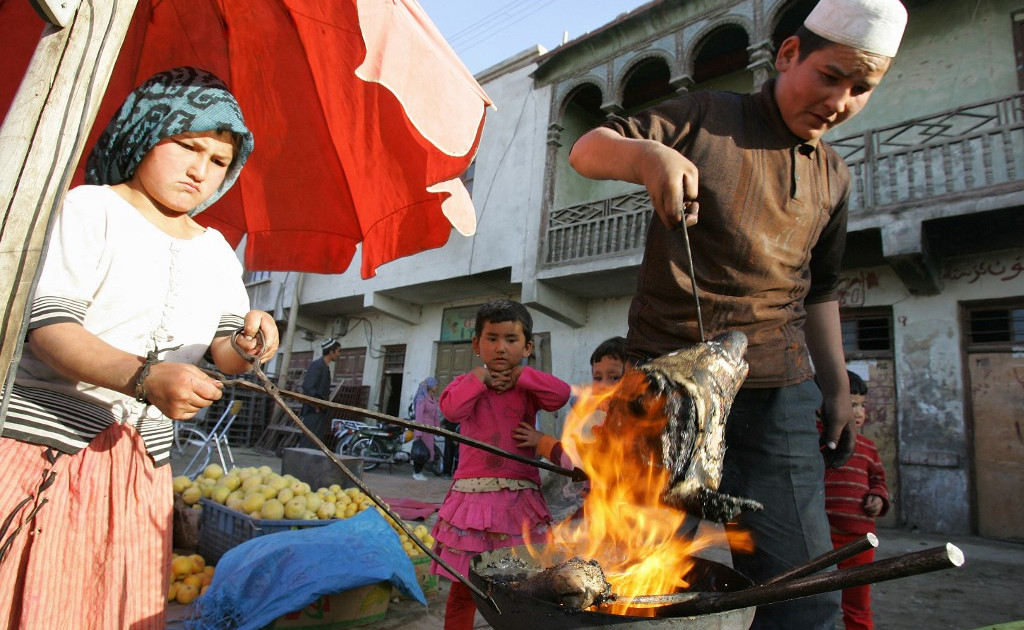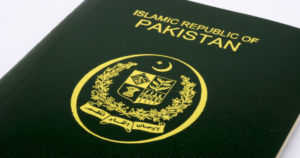
China’s treatment of the largely Muslim ethnic group from Xinjiang has become a source of international tension with Beijing, which insists it is tackling extremism, accused of genocide.
In the late summer of 2018, the United Nations revealed that at least a million Uighurs had been detained in “counter-extremism centres” in China’s Xinjiang province, thrusting the treatment of a once-obscure mostly Muslim ethnic group into the spotlight.
The report also revealed that a further two million Uighurs had been “forced into so-called re-education camps for political and cultural indoctrination” beginning in the middle of 2017. Other reports put the figure at one million.
The detentions, forcible training as well as alleged abuses inside enclosed government facilities were later described by the United States and many international human rights groups as a form of genocide constituting “crimes against humanity”.
China has rejected the allegations, saying its policies towards the Uighurs and other Muslim minorities living in its far western region, are necessary to “fight extremism” and to promote upward economic mobility for the impoverished ethnic groups.
But secret documents have revealed a “deliberate strategy” to lock up ethnic minorities and erase their language and way of life.
Who are the Uighurs and why has Beijing been cracking down on them in recent years?
Natives of Xinjiang
The Uighurs (also spelled as Uyghurs) are an ethnic minority group mostly living in the Xinjiang autonomous region of the People’s Republic of China.
The Uighurs are predominantly Muslims. They have been practising Islam for centuries, tracing their religious influence to the Karakhanid, a Turkic fiefdom that ruled Central Asia from the 9th to the 13th century. In previous centuries, Uighurs followed other religions including Zoroastrianism and Buddhism.
According to official Chinese records, there are 12 million Uighurs, representing almost half the population in Xinjiang. A recent report published in Xinhua news agency quoted China’s top diplomat, Wang Yi, as saying that the population increased from 5.5 million to 12 million in the last 40 years.
The 1953 Chinese census data from Xinjiang was incomplete, but it showed that 97 percent of the 1.5 million people in the city of Kashgar were Uighurs, while 99 percent of the 700,000 people in Hotan were Uighurs.
The World Uyghur Congress, a group of Uighur exiles advocating for human rights in their homeland, puts their number at about 20 million living inside and outside of China.
The Uighurs speak a language of the same name, which has Turkic roots.
Xinjiang: New frontier
Most Uighurs in China live in the region called Xinjiang, a Chinese term to mean “new frontier” or “borderland”.
Because of its location along the ancient Silk Road, Xinjiang has a long history of cross-migration by different minority groups.
In China, it has been officially referred to as the Xinjiang Uighur Autonomous Region (XUAR) since 1955. Other ethnic groups including Han Chinese, Kazakhs, Kyrgyz, Mongols, Tajiks, Uzbeks and Tatars also live in the area.
Most Uighurs in China live in the region called Xinjiang, a Chinese term to mean ‘new frontier’ or ‘borderland’ [Stringer/AFP]
Located in China’s far northwest, Xinjiang covers more than 1.6 million sq km (617,763 sq miles) comparable to Iran in terms of land area. It is the largest region of China and makes up about a sixth of the country’s entire land area. It is rich in oil and natural gas and boasts a natural beauty that has attracted international filmmakers.
In 1933, an independent East Turkestan was briefly declared by the then-majority Uighurs, but its borders were unsettled and its army was soon defeated by nationalist Chinese led by Chiang Kai-shek.
A second East Turkestan republic was declared in 1944 with Soviet backing. But in 1949, China’s new Communist rulers who had defeated Chiang in the civil war annexed the region with the nod of Joseph Stalin, the then Soviet leader, ending the Uighurs’ dream of an independent homeland.
Beijing insists it has an ancient claim to Xinjiang – dating back to 206BC – and considers it an “inseparable part of the Chinese nation”.
Uighurs disagree, saying that borders in the region have been drawn and redrawn for centuries, depending on the dominant power, including the Mongols and the Turkic Karakhanid. Overseas Uighurs also say that their religion, language and cultural practices clearly distinguish Xinjiang from the rest of China.
China’s birth control policies against minorities in Xinjiang could cut the Uyghur population by 33% — up to 4.5 million births in 20 years, says a study reported by Reuters. China has allegedly forced abortions and sterilization on women. Experts call it “demographic genocide.” pic.twitter.com/nsLDZPoFok — AJ+ (@ajplus) June 7, 2021
‘History written by winners’
Indiana University Professor Bovingdon Gardner, author of the book The Uyghurs: Stranger in Their Own Land, says that when it comes to the issue of sovereignty “there isn’t any universal agreement on what constitutes sovereign claim of a territory” for the Uighurs.
“So there’s no lever with which to sort of pry [prise] apart the claims” of China and the Uighurs.
Dru Gladney, a professor and expert on Uighur studies who is now affiliated with Pomona College in California, adds that “history is always written by the conquerors”.
But he notes that even in the Chinese language, Beijing refers to Xinjiang as a “new frontier”.
“So the very name suggests that it’s new to China, and its own history shows that the region was rarely completely under Chinese control,” he said.
Since 1949, when Mao Zedong’s communist army took control of Xinjiang, out-migration has increased substantially, with Uighurs leaving the region to escape political and religious repression, leading to a gradual decline of their once majority population.
Other waves of migration occurred during the great famines of the 1950s and 60s, followed by Mao’s bloody Cultural Revolution, which saw many intellectuals purged or summarily executed.
Thousands of Uighurs now live in Turkey as exiles following the recent political persecution of the Muslim minority group in China’s Xinjiang region [File: Ozan Kose/AFP]
Hundreds of thousands, if not millions, of Uighurs and other Muslim minority groups eventually escaped to neighbouring Central Asian countries, including Kazakhstan, Kyrgyzstan, Tajikistan and Uzbekistan. Others fled to Afghanistan and Turkey.
Following renewed political tensions in recent years, thousands of refugees escaped to Europe, while more than 1,000 eventually made it across the Atlantic to the United States. The Uighur population in the US have since increased to at least 9,000 in 2015.
Meanwhile, millions of Han Chinese started resettling in Xinjiang with Beijing’s encouragement, and they now make up the second-largest ethnic group in the region, diluting the dominance of the Uighur population in their own homeland and creating new sources of tension.
At the same time, human rights observers have also accused Beijing of rolling out birth-control policies targeting Uighurs and other minority groups, aiming to cut 2.6-4.5 million births within 20 years.
‘Bogeyman of anti-terror fight’
In early 2017, shortly before the mass arrests and re-education programmes were rolled out by Beijing, Zhu Hailun, then head of the Xinjiang Communist Party Political and Legal Affairs Commission, was quoted as saying that with the “powerful fist” of the Chinese government, “all separatist activities and all terrorists shall be smashed to pieces” in Xinjiang.
As many as one million ethnic Uighurs and other mostly Muslim minorities are believed to be held in a network of internment camps in Xinjiang, but China has not given any figures and describes the facilities as ‘vocational education centres’ aimed at steering people away from extremism [File: Greg Baker/AFP]
Months later, the unprecedented crackdown on the Uighurs began. Chinese President Xi Jinping had also said in 2017 that all religions in the country should have a Chinese orientation in line with his policy of “Sinification”.
At the crux of the strained relations, scholars say, is the Uighurs’ desire for a homeland and to express their identity and China’s determination to impose total control – from the way people worship to how many children they should have and what they should eat – anxious of the potential risk not only to the country’s territorial integrity but also the dominance of the Communist Party.
The authorities also closely control the Catholic Church in China, and put pressure on regions such as Tibet, where the Dalai Lama was forced into exile after the territory was annexed in 1950. Beijing has also insisted that it will choose the next Dalai Lama.
In a 2009 Democracy Now interview, Nury Turkel, former president of the Uyghur American Association, called the Uighurs “the other Tibetans you never heard of”.
The tensions have been building over time, sometimes erupting into violence.
In the 1990s, there were attacks linked to the East Turkestan Islamic Movement (ETIM), a group advocating for violence to create an independent state of East Turkestan to replace Xinjiang.
In February 1997, hundreds of peaceful protesters were allegedly shot to death by Chinese soldiers in what Uighurs now call the Gulja massacre, referring to the city near the border with Kazakhstan.
The 9/11 attacks on New York and the so-called US “war against terror” that stretched from Iraq to Afghanistan and Pakistan, which partly borders Xinjiang, eventually led Beijing to launch its own campaign against “extremism” targeting Uighurs, calling any protests in the region an act of “separatism”.
In the regional capital, Urumqi, many Uighurs were reported killed in 2009 in clashes that Beijing blamed on Uighurs. Then in July 2011 clashes between Uighurs and Han Chinese in the ancient city of Kashgar killed 14 people and injured 40 others.
The crackdown gradually became more intense with Uighur activists and even scholars denounced as Muslim “terrorists” and thrown in jail or hastily sentenced to death. Uighurs, who had travelled abroad and later returned to China, were suspected of promoting “extreme” views and interrogated.
What is life like in Xinjiang?
In a report in June, Amnesty International described life in Xinjiang as a “dystopian hellscape“, with former detainees revealing torture and other rights abuses committed “in an effort to forcibly instill a secular, homogeneous Chinese nation” according to the ideals of the country’s Communist Party.
Surveillance in Xinjiang is also pervasive with countless camera monitors installed in big cities, such as the capital, Urumqi, making it impossible for journalists to speak to Uighurs, without them risking possible arrest.
A 2019 report by Human Rights Watch (HRW) said the government was using a mobile application to store data of Uighurs and other Turkic Muslims, in order to monitor their movement through facial recognition.
The goal is apparently “to identify patterns of, and predict, the everyday life and resistance” of Xinjiang’s population, “and ultimately, to engineer and control reality”. Using technology, residents are also being flagged for their relationships, their communications, their travel histories, or for being related to someone the authorities consider as suspicious, HRW said.
There have also been reports of the government banning Muslims from fasting during Ramadan, or women wearing veils and men growing their beards long. Muslims were also reportedly forced to eat pork, which is prohibited in Islam.
In 2020, an investigation conducted by the Australian Strategic Policy Institute (ASPI), using satellite imagery and ground reporting, also revealed “thousands of mosques” in the region have either been damaged or destroyed in just three years.
In response, China said the governments at various levels in Xinjiang “have consistently improved the public services of mosques”, but did not address the specific allegations of ASPI.
“More than 50 former camp detainees shared new testimony with @Amnesty […]” Amnesty International adds to the growing body of evidence of China’s atrocities targeting Uyghurs.https://t.co/21YMm9AYZy — Uyghur Human Rights Project (@UyghurProject) June 14, 2021
What does China say?
China has vehemently denied the accusations of genocide and other abuses, insisting that the policy of Xi Jinping towards Uighurs is aimed at “tackling extremism”, while giving minorities the skills to become more employable and contribute to the economy.
In a previous interview with Al Jazeera, Einar Tangen, a political analyst who advises the Chinese government, told Al Jazeera that Beijing considers re-education and training a necessary measure to address poverty.
“This is not something that they are doing because they are trying to be mean to the Uighurs. They actually think that this is helping. They [Beijing] cannot afford to have people who have no future. It is not just about terrorism. They are really anti-poverty.”
In another interview with Al Jazeera, Tangen said the economic situation in Xinjiang had “improved dramatically over the years” and people there were better off.
“People live longer. They have better opportunities,” he said.
In a recent article published by Xinhua, the government said its programme against “extremism” in Xinjiang was in compliance “with the principles and spirit of a series of international counter-terrorism resolutions, including the UN Global Counter-Terrorism Strategy”.
It says that because of its counterterrorism and “deradicalisation measures”, there have been “no violent terrorist cases for over four consecutive years in the region”.
Beijing added that since 2018, 151,000 people in “poverty-stricken families in southern Xinjiang” have secured jobs away from their homes, most of them working in other parts of the region, while almost 15,000 are working in other parts of China.
The government said many now earn an annual income of 45,000 yuan ($7,000), several times higher than what they would have earned from farming or working in their hometowns.
“Xinjiang-related issues are not about human rights, ethnicity or religion at all, but about combating violent terrorism and separatism.”






